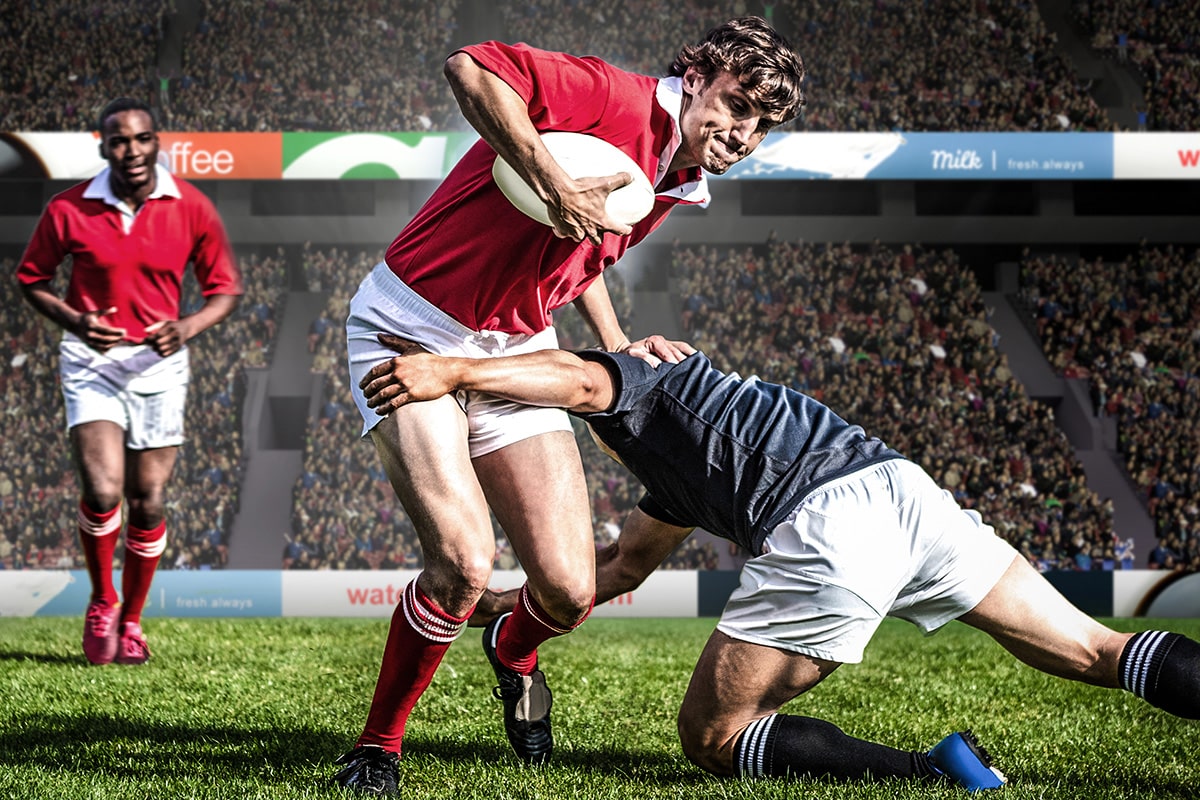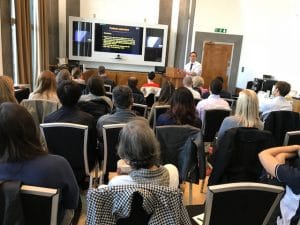
Insights from Orthopaedic Upper Limb Surgeon Mr Tavakkolizadeh
As an orthopaedic surgeon with a passion for sports medicine, I’ve had the privilege of working with athletes from various disciplines. Among the most challenging cases I encounter are upper limb injuries sustained on the rugby field. Rugby is a physically demanding sport that places significant stress on the shoulders, elbows, and wrists, often resulting in high-impact injuries that require specialised care and treatment.
In this blog post, I’ll delve into some of the most common upper limb injuries seen in rugby players and discuss strategies for prevention and management.
Shoulder Injuries: The Impact of Tackles
In Rugby, shoulder injuries are the most commonly injured joint after the knee, with around 20% of all rugby injuries affecting the shoulder.
One of the most prevalent upper limb injuries is shoulder dislocation. The high-impact nature of tackles and collisions can cause partial or complete shoulder dislocation (when the ball of the humorous comes out of the shoulder socket). This is a nasty injury that requires very specialist and rapid treatment. Ideally, a trained medic needs to relocate the shoulder as soon as possible.
The Acromioclavicular joint (ACJ) (where your collarbone meets your shoulder) is also very susceptible to injury. A direct blow to the top of the shoulder in a tackle can cause dislocation to this joint. Not all ACJ dislocations require surgery, but some injuries are more likely to do poorly without stabilisation.
Fractured collar bones are also a common occurrence on the rugby field.
Rugby players are also prone to more longer-term ACJ pain. With heavy weight lifting and repeated shoulder impacts, over time this can cause damage to the cartilage inside the ACJ. Normally these players will have a painful but stable ACJ. They can often continue to play but with chronic pain. These patients do well with an arthroscopic excision of the distal clavicle (end of the collar bone), and can expect to return to play after a focused rehabilitation period.
Try scoring or diving tends to cause soft tissue injuries such as anterior labral tears, rotator cuff muscle injuries and capsular injuries.
If mild, these soft tissue injuries can usually be managed conservatively with Physiotherapy, however more extensive damage sometimes requires minimally invasive (keyhole) surgical repair.
As an upper limb orthopaedic surgeon, our goal is to restore stability and function to the shoulder joint through conservative measures such as physiotherapy and rehabilitation or surgical intervention if necessary.
Elbow Injuries: Weathering the Strain
Rugby players are also susceptible to a range of elbow injuries. Fractures, dislocations and ligament tears can all result from the forces generated during falls, tackles or collisions.
Fractures may involve the olecranon (the bony prominence at the tip of the elbow) or the radial head (the top of the radius bone), and may require surgical management for proper realignment and stabilisation.
Dislocations occur when the bones of the elbow joint are forced out of alignment. These injuries are incredibly painful and are usually accompanied by significant swelling. These patients need immediate intervention to relocate the joint back into position.
Ligament tears, particularly those of the ulnar collateral ligament (UCL), can lead to instability and compromise the joint’s integrity, necessitating specialised treatment to restore function and prevent long-term complications.
Other injuries include medial and lateral epicondylitis (commonly known as golfer’s and tennis elbow, respectively) and ligament sprains. These injuries often result from repetitive throwing, tackling, or gripping motions, placing strain on the tendons and ligaments around the elbow joint. Treatment typically involves rest, anti-inflammatory medications, and physiotherapy to alleviate symptoms and strengthen the affected structures.
Wrist and Forearm Injuries: Fractures to Ligament Tears
The wrists are another area prone to injury in rugby, with fractures and ligament tears again being common occurrences. Impact from falls or tackles can lead to fractures of the hand, wrist or forearm bones, while sudden twisting motions may cause ligaments or tendons to stretch or tear.
Prompt diagnosis and appropriate management are crucial for optimising outcomes and preventing long-term complications, which may include chronic pain and instability.
Management Strategies: From Diagnosis to Recovery
When faced with a traumatic upper limb injury, prompt and accurate diagnosis is essential for determining the appropriate course of treatment.
Injury treatment depends on a number of factors:
- The type of the injury – soft tissue of bony injury
- The number of structures involved
- Severity of the injury
- Degree of pain or loss of function
- The level of play intended in future
Imaging studies such as X-rays and MRI scans are often employed to assess the extent of the injury and guide treatment decisions. In cases of dislocation or fracture, immediate medical attention is crucial to minimise further damage and facilitate timely reduction and stabilisation of the joint.
Depending on the severity of the injury, treatment may range from conservative measures such as immobilisation and physiotherapy to surgical intervention for complex fractures or ligament reconstructions.
Rehabilitation plays a vital role in the recovery process, focusing on restoring range of motion, strength, and function while minimising the risk of complications such as stiffness and instability.
Prevention Strategies: Mitigating Risk on the Field
While injuries are an inherent risk in rugby, there are several strategies players can employ to reduce their likelihood. Proper warm-up and stretching routines can help improve flexibility and reduce the risk of muscle strains and tears.
Coaches and trainers should also emphasise the importance of proper strength and conditioning training to enhance muscular support and resilience, thereby reducing the likelihood of sustaining an injury. They should also teach proper tackling and falling techniques to minimise the risk of traumatic impact injuries.
Additionally, ensuring that protective gear such as shoulder pads and elbow braces are worn correctly. These can provide added support and stability during gameplay.
Conclusion: Promoting Safety and Longevity
As orthopaedic surgeons our primary goal is to promote the safety and well-being of athletes on and off the field. Our role extends beyond treating injuries; we’re committed to promoting the safety and longevity of athletes’ careers. We aim to empower players to enjoy the sport they love while minimising the risk of injury. If you or someone you know has experienced an upper limb injury, don’t hesitate to seek professional medical advice to ensure timely and effective treatment. Together, we will help keep you injury free, and thriving in the game they’re passionate about.
London Bridge Orthopaedics
Mr Tavakkolizadeh is one of our expert upper limb consultants. He has clinics at The Shard (part of London Bridge Hospital) in London and also in The Blackheath Hospital and the Sloane Hospital. He covers all injuries of the shoulder, elbow, wrist and hand.
Reviews
“Adel was very attentive and listened to my symptoms. I found him to be very friendly and caring, his explanation of the procedure I required was 1st class. He detailed what would happen during the surgery and post operation. He also stressed the dangers of surgery and gave me a realistic outlook for the future, both during recovery and post recovery. He showed interest in me and what my expectations were. I would recommend Adel without hesitation.”
If you have sustained any of the above injuries, or are experiencing pain in any part of your upper limb, please do not hesitate to get in touch and book an appointment. You can request an appointment online, or call our booking team on 0203 576 5296.
For follow up appointments please book an appointment via your consultant’s secretary.









